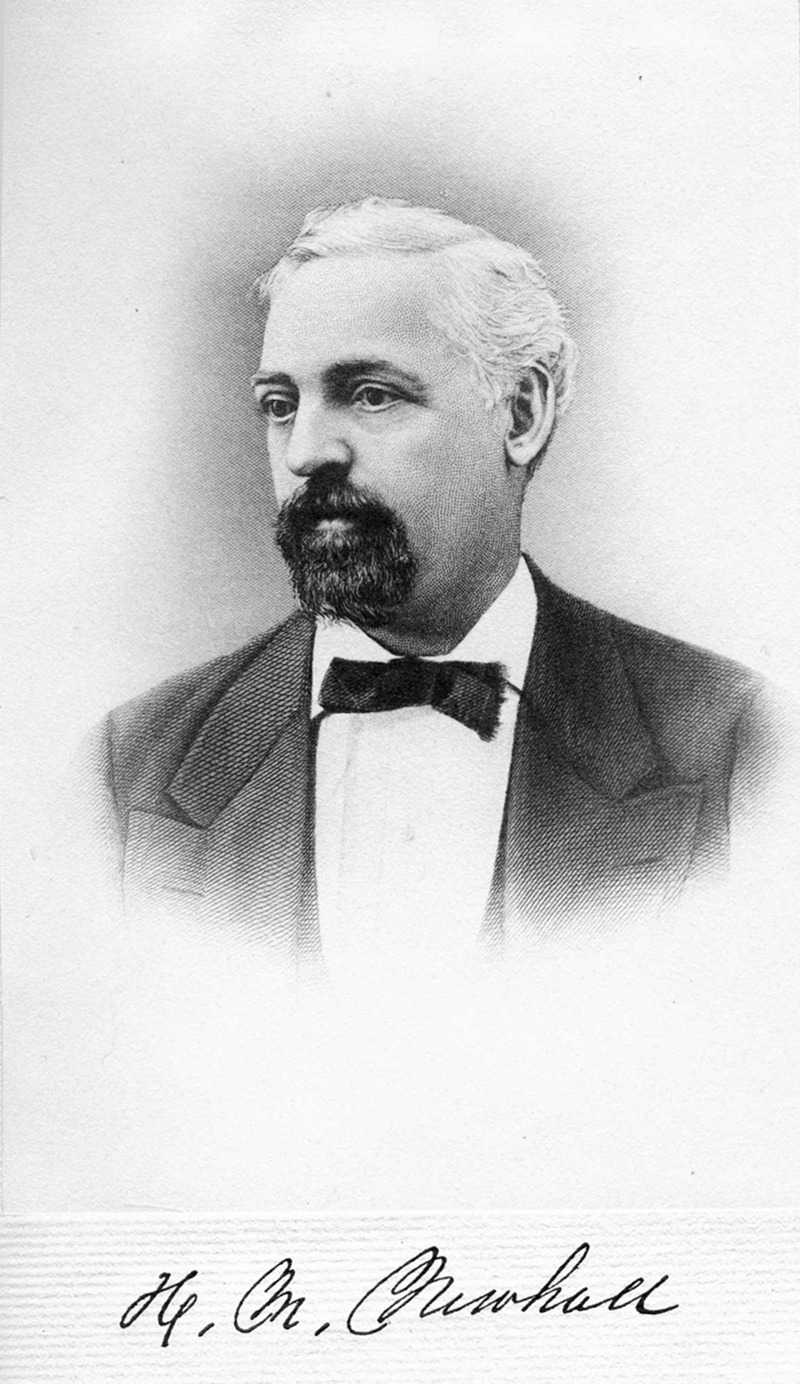Part 1 of 2.

|
On January 15, 1875, an enterprising 49-year-old auctioneer-turned-venture capitalist
named Henry Mayo Newhall paid just under $2 for each of 46,460 acres of the Rancho San
Francisco. An old land grant that had fallen into private hands when Mexican
Revolutionaries wrested political control from Spanish missionaries in the early 1800s, the
Rancho encompassed most of the western Santa Clarita Valley and stretched out into
Ventura County.
If $2 per acre sounds like a steal, consider that some pioneer oilmen had paid Don Antonio
del Valle's descendants $1.11 an acre for it, ten years earlier. The drought of 1863-1864 had
devastated the Del Valle cattle ranch, and the hunt for black gold was on.
Henry Newhall purchased the Rancho after various speculators defaulted on loans. Between
1871 and 1875, Newhall acquired a total of 143,000 acres throughout Alta California that had
fallen, or would soon fall, into receivership.
Newhall had made a fortune in railroads and knew the Iron Horse could bring people,
commerce and prosperity to his new holdings.
For one dollar, the clever businessman deeded a right of way at the eastern extremity of his
local Rancho to Southern Pacific's Charles Crocker (of banking fame) and Leland Stanford
(co-founder of the California Republican Party).
For another dollar, Newhall sold them a plot of land for a whistle stop near present-day
Railroad Avenue. Southern Pacific started designing a new town around it later that year
and dubbed it "Newhall."
Following Henry Newhall's untimely death in 1882, his widow and five sons sought to avoid
the family imbroglios that invariably seem to accompany the division of an estate. Rather
than split their California Ranchos among themselves, family members joined forces and
created what they called The Newhall Land and Farming Company to manage their
agricultural and ranching concerns.
On December 23, 1936 — sixty years after Alex Mentry
started pumping high-grade crude out of Pico Canyon, a mile south of Newhall property —
Henry Newhall's grandson-in-law Atholl McBean finally struck oil on the Rancho San
Francisco. McBean changed the old land grant's name to "Newhall Ranch."
Tracts of affordable housing started cropping up all over the Southland after World War II.
Locally, William Bonnelli, then-owner of what is now the Saugus Speedway, built the first
such tract up Seco Canyon.
Atholl McBean quickly saw the potential for ventures more lucrative than cattle ranching,
onion farming and even oil drilling — as did the County of Los Angeles. L.A. County
supervisors, unlike their counterparts in Ventura, decided to tax land at its highest possible
value. Property tax rates were now based on housing and commercial potential, whether
or not homes actually dotted the landscape.
The Newhall Land and Farming Company spent the 1950s and early '60s readying itself for
a change in direction. If it must pay taxes for housing, it may as well build.
Family members had strong feelings for the land and were loath to sell off portions
piecemeal. Instead, they hired cutting-edge urban planners to design a complete, self-contained
town with an appropriate blend of homes, schools, parks, shopping centers and
other necessities.
As Henry Newhall had done 90 years earlier, in 1965 an aging Atholl McBean was ready to
sell a right of way for the purpose of building a town. By now the automobile had replaced
the locomotive as the primary purveyor of people; McBean sold the right of way not to
Southern Pacific, but to the State of California for the construction of Interstate 5.
Again a new town would spring up along a major transportation corridor. On the advice
of Henry Newhall's great-grandson and former Signal editor Scott Newhall, the
town was called "Valencia."
Over the past three decades, Valencia has grown to be worth somewhat more than two
bucks an acre, and The Newhall Land and Farming Company has parlayed itself into a
publicly-owned limited partnership that trades on the New York Stock Exchange. Today,
the company is master-planning new frontiers in Arizona.
Top company brass have always been people who, like Henry Newhall, could foresee new
markets and blaze new trails. Company philosophy has consistently stemmed straight from —
where else? — Leland Stanford's University. Almost all post-war executives, from James
Finch and Jim Dickason to current execs Tom Lee and Gary Cusumano, were products of
the Stanford business school that Atholl McBean helped found.
Much as its farming and ranching concerns keep giving way to construction, so will The
Newhall Land and Farming Company chase new horizons when there are no more nails to
drive or boards to hammer on the vast Rancho San Francisco.
In 20 years, who knows? Maybe The Newhall Land and Farming Company will become the
dominant telecommunications powerhouse of the Pacific Rim. After all, ages ago, Henry
Newhall ran a successful Pacific Rim import-export business out of San Francisco.
For now, however, housing remains the company's most visible industry. One hundred
twenty years after a particular fortune seeker from Saugus, Massachusetts laid claim to the
western Santa Clarita Valley, Newhall Ranch is back in the news.
TO BE CONTINUED....
Go to Part 2
©1995 LEON WORDEN — ALL RIGHTS RESERVED

